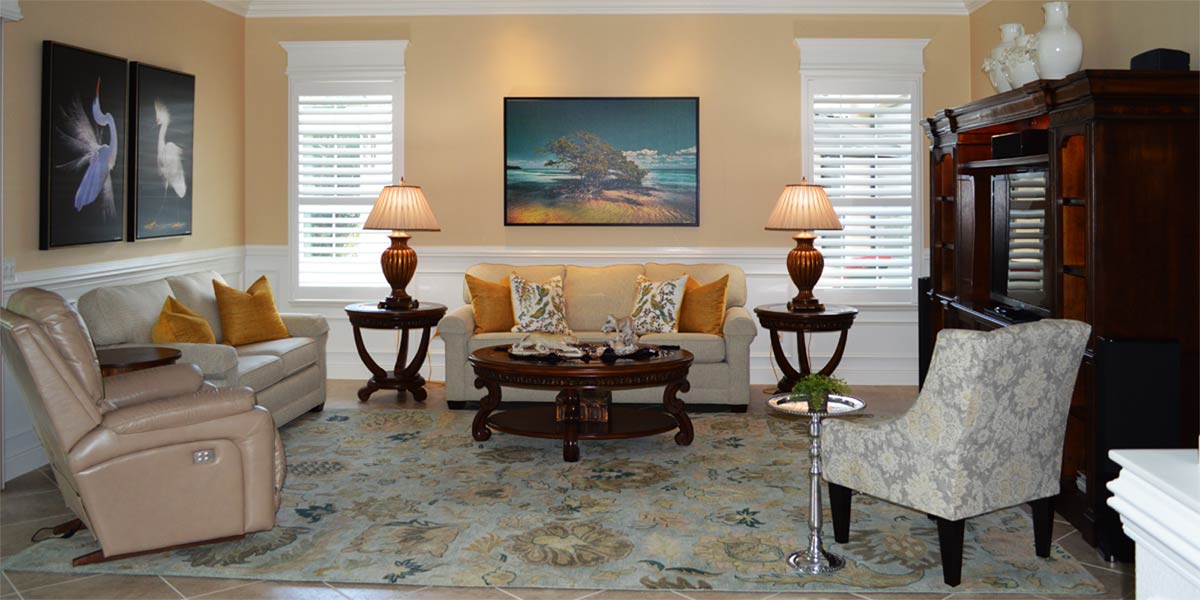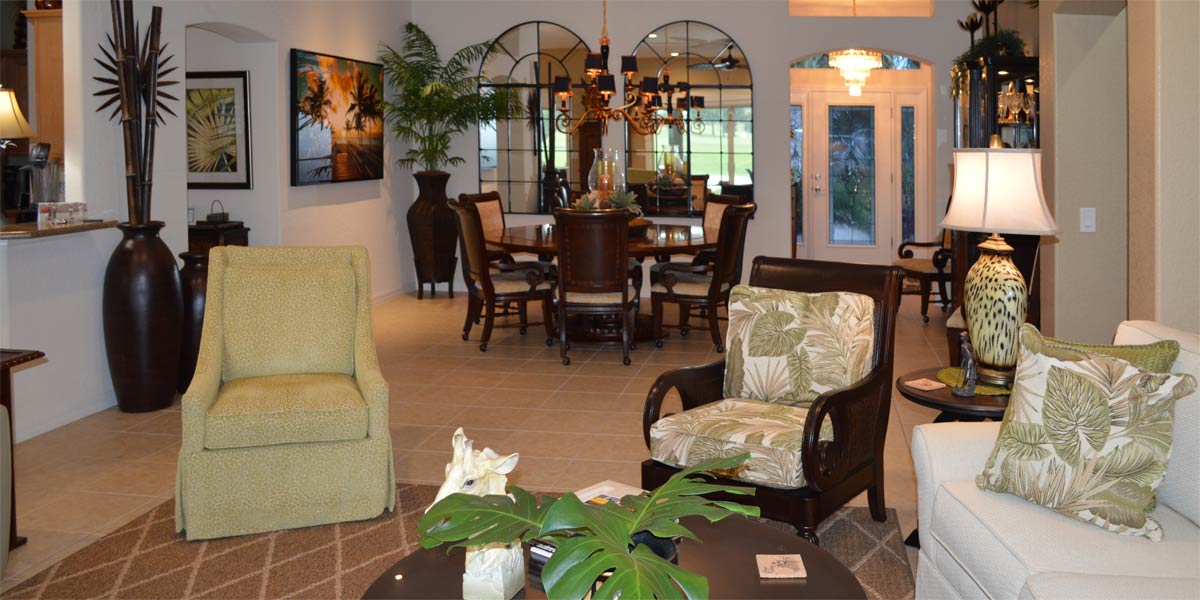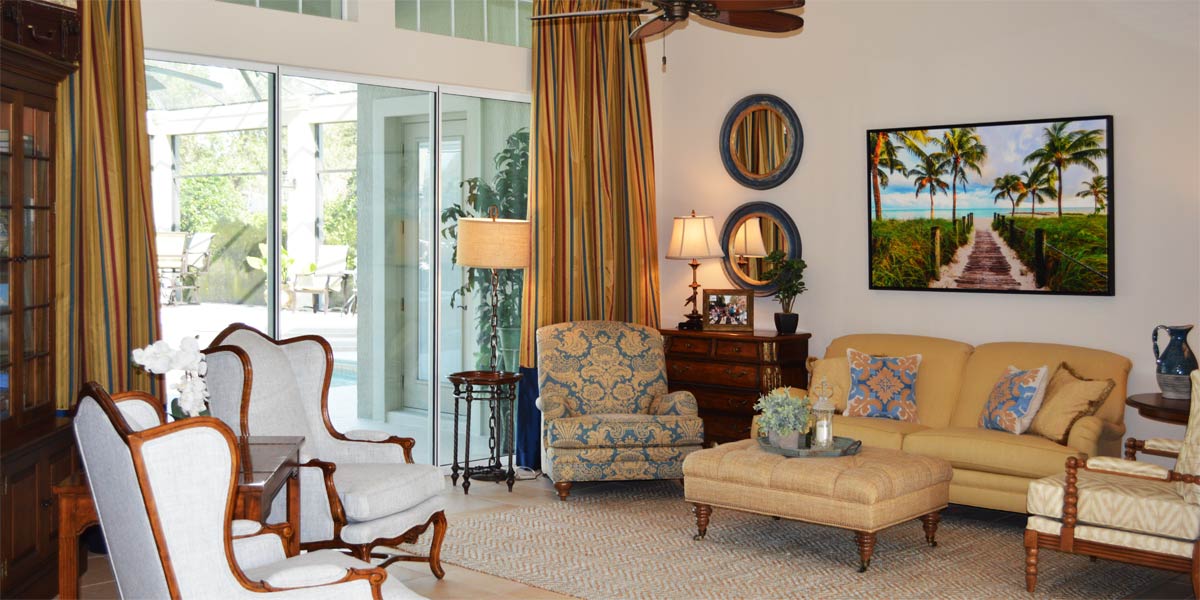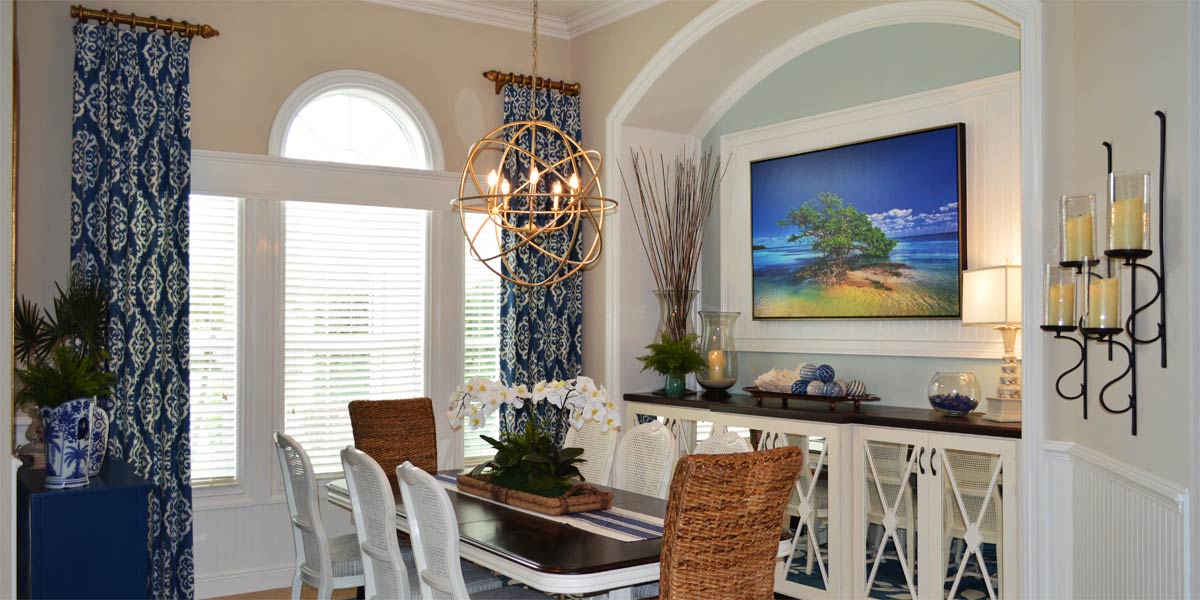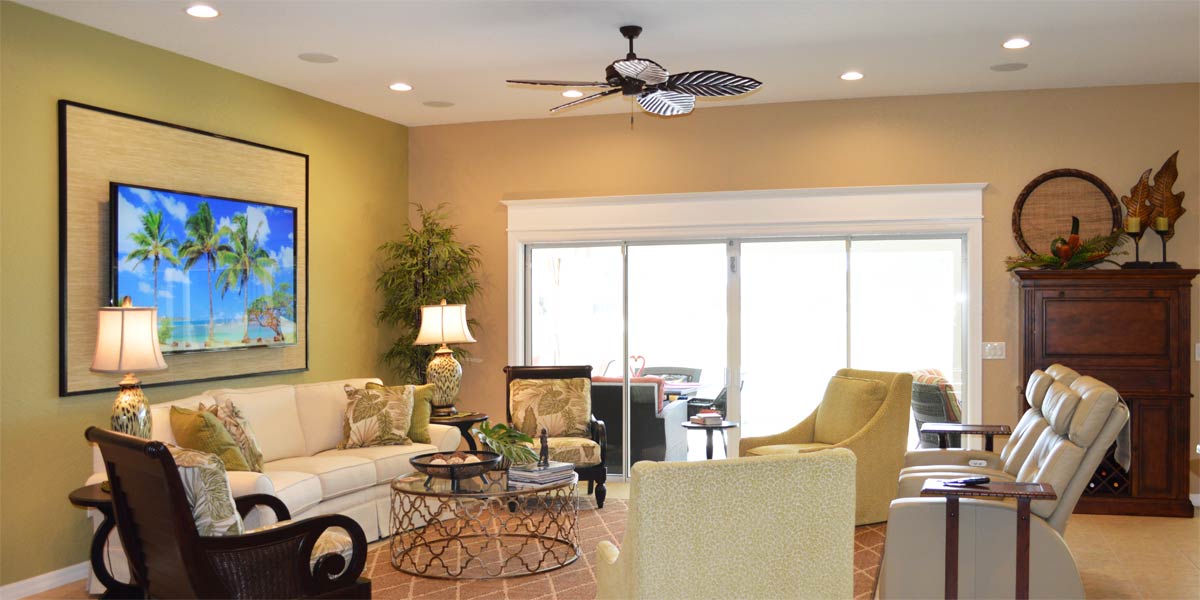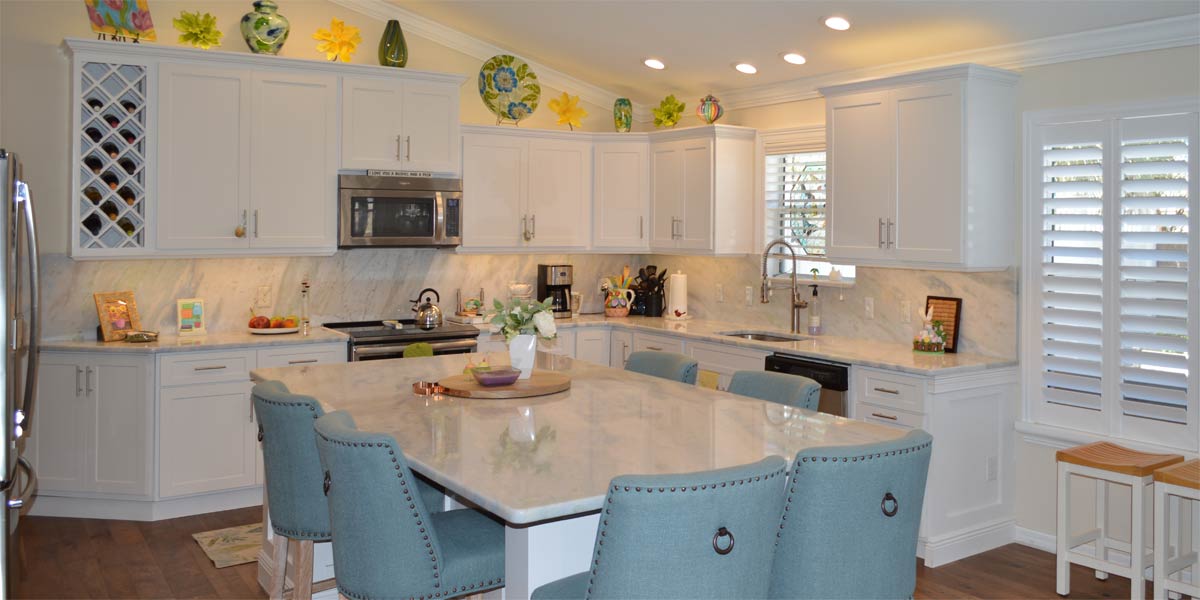A Grand Room for a Grand Piano
The first piano was invented by Bartolomeo Cristofori in Florence around the year 1700. The oldest remaining piano by the inventor lives to this day at the Metropolitan Museum of the arts and is dated in the year 1720, making the piano more than 300 years old. In the days of royal courts, the piano was known as the piano forte but somewhere in the 18th century the forte was dropped for convenience. As the 18th century progressed and pianos could be commercially produced, they became a status symbol for many middle-class families. Today the piano remains cherished for its touch and tone, yet its size and tuning needs create challenges that keep it out of many homes. However, there are a select few who still own them and play them with regularity. Let’s peek into the living room of a St. Augustine model to see how furniture placement makes a difference when housing a baby grand somewhere in the heart of The Villages.
• Furniture placement
Furniture placement is the starting point and the most important step for any room re-design. This room features two equally sized walls, allowing flexibility in choosing a focal point. When entering the home, the eye naturally moves to the left, where the space connects to the dining room and kitchen. With that in mind, the left wall was selected as the focal point. The piano was relocated to the back of the room and positioned with its back in the corner. This placement helps reduce the visual impact of such a large piece, making it feel more integrated into the space. In its original position, the piano appeared wide and dominant, but now it feels cozy and welcoming.
The sofa and two chairs were arranged along the left wall, anchoring the bulk of the furniture and establishing a defined seating area. This layout supports casual conversation and offers an inviting spot to enjoy music if the homeowner decides to play. By moving the piano to the corner, it opened new space which allowed the addition of another chair with a small side table and lamp. This chair is exceptionally comfortable and can be pulled into the seating arrangement when needed.
• New Furniture
The homeowner wanted a mix of seating, so we brought in a sofa from the family room and added three new chairs. Although each chair has a distinct silhouette, covering them in the same fabric creates a unified look. I usually recommend solid upholstery on large pieces and introduce pattern through pillows. In this case, the homeowner chose a vibrant print that energized the room and visually tied all the seating together.
• Wall treatments
A grand room with a grand piano should have grand walls! The homeowner added decorative molding to give the piano room that sense of grandeur. Trim molding was arranged into panels: three large rectangles span the top of the wall on each side, while equally wide but shorter panels line the bottom of the wall on each side. This pattern adds texture, defines the vertical space, and naturally draws the eye upward creating a sense of grandeur that is befitting a piano room. In the before picture, a wall of framed photos hung directly above the piano, creating a heavy visual focal point on one side. The new molding distributes interest evenly across the surface, balancing the room and turning the walls into an elegant architectural feature.
• Window treatments
The back wall with the triple sliding glass door needed some beauty too! To add softness and sound absorption we added luxurious side panels. These side panels were purchased in a soft blue that coordinated with the touches of blue found in the print on the chairs. The panels are made of lined Belgium linen without print, since the chairs had print, and they drape beautifully. Each panel measures 100 inches wide by 120 inches long, and they were chosen to complement the height and grandeur of the wall molding. Hung across the full width of the wall, these drapery panels frame the view and add an elegant, enveloping backdrop.
• Art
In the before picture of the room you will notice there were more pictures than in the after. The homeowner decided that she only wanted to put back the pictures that had deep meaning to her and her husband. I like the way we positioned them in the boxes creating a sense of balance and restraint in the space.
• Three lamps
Each lamp in the room doubles as a sculptural feature. The two oversized pineapple lamps are handcrafted by Thai artisans and finished with a hand-applied glaze. Beside the single chair, a blown glass lamp captures and reflects the soft blue tones of the side panels and the print of the chair fabric, tying the lighting into the room’s color story.
• Large cut area rug
Because the room is so big, sourcing a single wool rug in the dimensions needed proved to be difficult. Instead, the homeowner had a broadloom carpet custom-cut and bound to fit perfectly. In a piano room, a rug is essential, not only does it define the seating area and add warmth underfoot, but it also softens echoes and enhances the instrument’s acoustics.
Call Ruth your full service decorator at: 352-804-2056
or Contact Us
